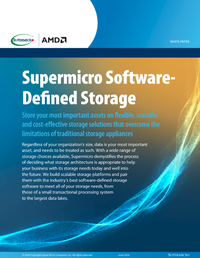At this point in the evolution of modern business, everyone agrees that data is their most important asset. Transactional data is created when customers purchase what a company sells. Web-tracking data can identify which pages are most frequently visited. Operational data can track factory outputs and automation efficiency.
All of this data enjoys a second life when it is used to inform next-generation businesses that want to gain every insight they can from their data—whether to predict customer behavior and change how products are presented, or to predict when a machine might fail and intervene with preventative maintenance or replacement. When artificial intelligence models are used to provide insights, they need to be trained with the largest amount of data possible.
And there is the challenge: forward-looking organizations need to retain all of their data for possible future use, and they need a strategy for storage systems that are up to the task.
Download our whitepaper as we delve into:
- Benefits of software-defined storage
- Block, file and object defined storage
- Scale up vs. scale out storage

